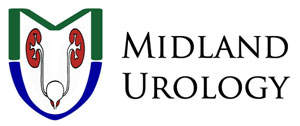
Nick Shroff, M.D. As a man approaches middle age, his prostate generally enlarges, creating a condition known as benign prostate hyperplasia (BPH). While BPH is non-cancerous, its symptoms are still serious, as they can disrupt the quality of the person's life. The symptoms of BPH include the inability to empty the bladder completely, frequent or painful urination, weak or interrupted urine stream, difficulty in starting or stopping urination, incontinence and the need to get up many times in the night to urinate. Awareness of this problem is low, even though its occurrence is widespread. Over nine million men in America alone have been diagnosed with BPH. It affects at least 50 percent of men over the age of 60. By the age of 80, one out of every four men in the United States will require some kind of treatment for it. In the past, men with BPH had two main choices of treatment: (1) ongoing medication or (2) surgical intervention. Medication is not effective for all patients. It must be continued indefinitely making it very expensive in the long run and may produce side effects. Surgery is effective at reducing the symptoms. However, it requires anesthesia, a hospital stay and often a painful recovery period. Midland physician Nick Shroff, M.D., now offers a non-surgical therapy that has been used to treat over 30,000 patients nationally since 1998. He has treated over 300 men using a minimally invasive procedure known as microwave therapy or cooled thermotherapy, which uses carefully controlled microwave energy to shrink the size of the prostate. The procedure takes between 30 minutes and an hour, although the entire visit may take two to three hours, depending on how large the prostate has become. Dr. Shroff performs this procedure in his office on an outpatient basis. The proprietary name for the microwave thermotherapy device is the TARGIS® cooled thermotherapy system. The actual procedure involves applying a local anesthetic and draining the bladder through a flexible catheter. Then a balloon is inflated in the bladder to keep the catheter positioned in the prostate. The treatment catheter applies precisely targeted microwave energy deep into the enlarged prostate tissue, creating what is called "coagulative necrosis." In other words, it destroys some of the excess tissue in the prostate. To avoid damage to healthy tissue, temperatures are carefully controlled by a cooling system built into the treatment catheter. A sensing unit inserted in the rectum closely monitors the temperatures in nearby tissues. Patients normally go home within 30 minutes of the treatment. The recovery time is short compared to surgery, and the side effects are minimal. Because the tissue around the urethra can be irritated during the procedure, the patient usually will go home with a catheter, which will remain in place for about four days. There may be a small amount of blood in the urine during that time and some aching or discomfort is not unusual The benefits of this treatment are the result of a gradual process. In the weeks after treatment, the body slowly absorbs the tissue targeted by the microwave therapy, thus shrinking the size of the enlarged prostate. The shrinkage and associated effects decrease the pressure on the urethra, reducing the symptoms. Most men start to see improvement within six to 12 weeks. Microwave treatment reduces BPH symptoms by an average of 52 percent and increases peak urine flow by an average of 35 percent. Patients have reported improvement in their quality of life by an average of 60 percent. In one study, over 80 percent of patients reported they were "satisfied" or "delighted" with the treatment results. Studies carried out five years after treatments have shown this procedure to be both effective and long lasting. Even with all its positive attributes, microwave therapy is not appropriate for everyone. Dr. Shroff cautions. "For example, if a patient has a third prostatic lobe (most have two lobes), called a median lobe, the microwave treatment may not be helpful." Only after an office examination can Dr. Shroff determine whether the treatment is appropriate for an individual. For more information on this procedure, call Midland Urology Center at 432-683-5897. Visit their web site at www.shroffurology.com.
If so, it is time to find out about Cooled Thermotherapy, which is a safe and simple non-surgical procedure to solve problems of an enlarged prostate. This non-invasive procedure known as microwave therapy is used by Midland urologist Nick Shroff, M.D., to shrink non-cancerous enlarged prostate. Dr. Shroff performs this procedure during an office visit that takes a total of approximately two hours.
Daniel Khouri, M.D.
1200 West Wall Street |
